The top two Olympic medal materials are making their way onto the FMU blog today. Sorry, bronze, nobody likes you.
We’ll start with gold, naturally. Remember the Bentley Continental GT we showed you last week? Well, if you recall, its gas door button on the interior had stopped functioning. The gas door mechanism itself worked just fine, but somewhere between the switch and the mechanism, the signal gets lost. Well, a quick removal and breakdown of the circuit board that comprises all the door switches (window, gas door, etc.) showed us our issue. Here’s what we found:
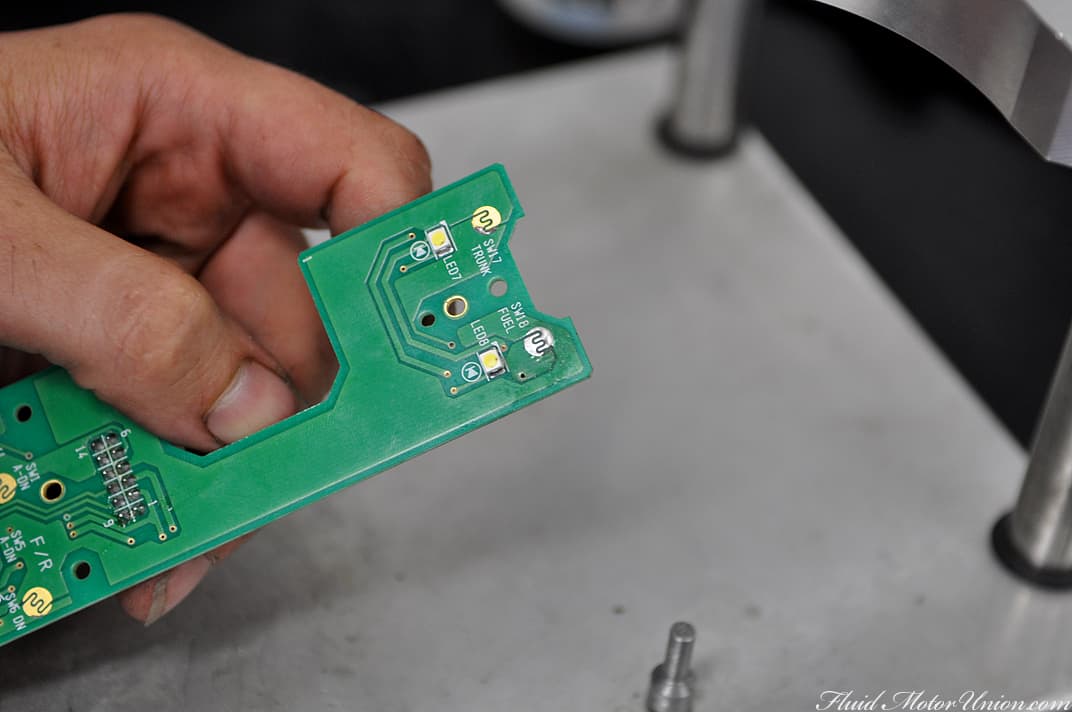
Take a look at that small silver circle on the top of the board. See how it looks like part of it is missing? To paraphrase the archetypal mechanic, “Well, there’s yer problem.” At some point in this car’s life, moisture seeped its way into the circuitry on the door’s armrest, and over time it corroded that tiny little sliver of conductive material, which caused the signal to no longer reach the gas door itself. Seeing as how the board would need to be replaced in its entirety, then reprogrammed by Bentley themselves (at a labor rate that resembles the GDP of several small countries), we had a better solution in mind, one that would work just as well. That solution? It comes down to this little, eensy teensy little strip of conductive gold wire, shown here at the end of a screwdriver.

The fix is actually relatively simple in terms of the physics of the whole thing. When that little piece corroded on the board, there was no longer a path for electricity to go from the gas door switch to the gas door itself. Gold conducts electricity, so if we’re able to replicate that path with this gold wire, in theory the electricity can once again travel to the gas door and it will open. This would require two quick soldering points and some incredibly steady hands, as there’s a whole lot more happening on that circuit board, and one ill-timed sneeze could screw it all up. The first step was to thread the gold wire through the small hole in the board next to the necessary soldering points.
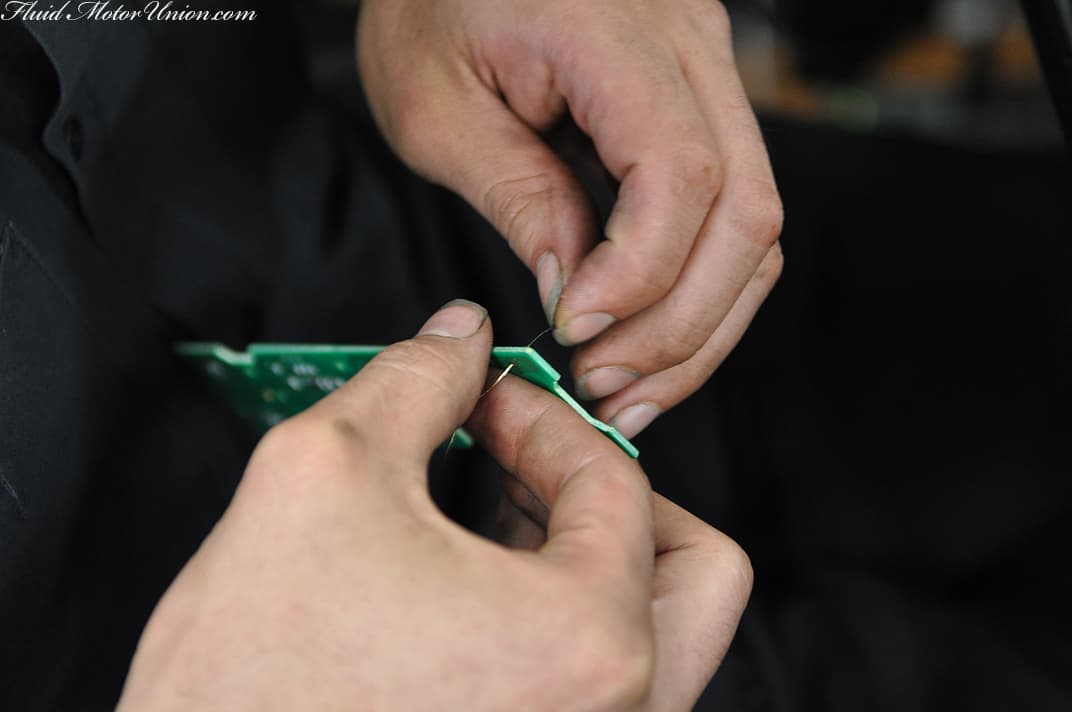
From there, we took an incredibly small amount of solder and dabbed it over the necessary point of contact, sealing the gold in place. And then we flipped the board over and did the exact same thing on the other side.
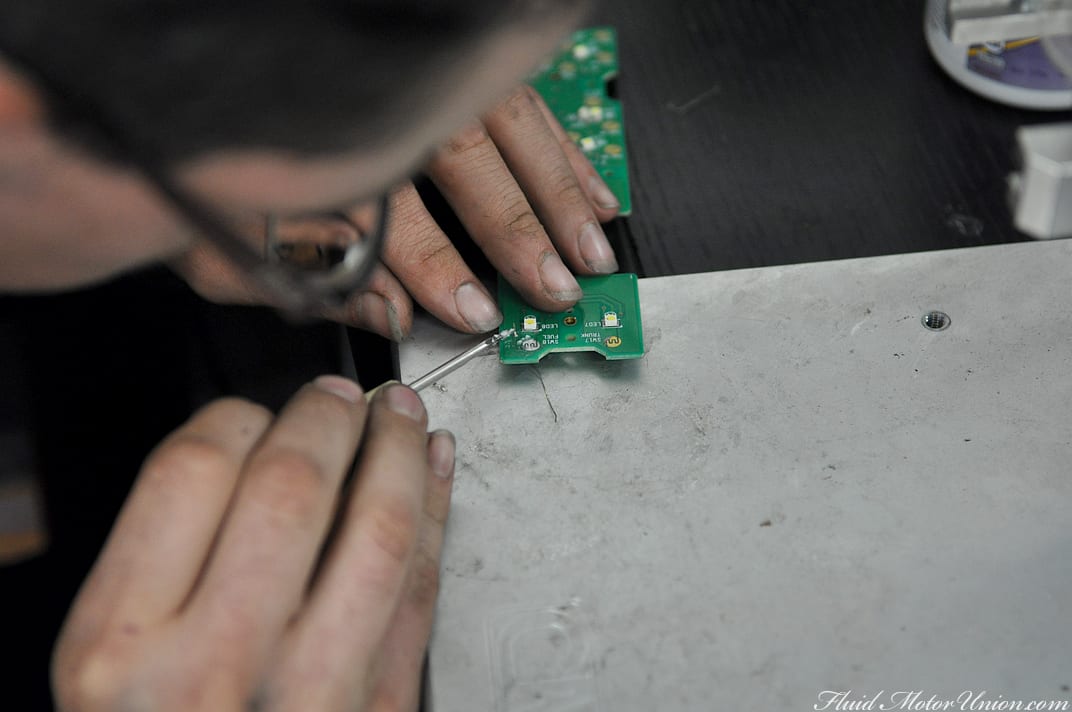
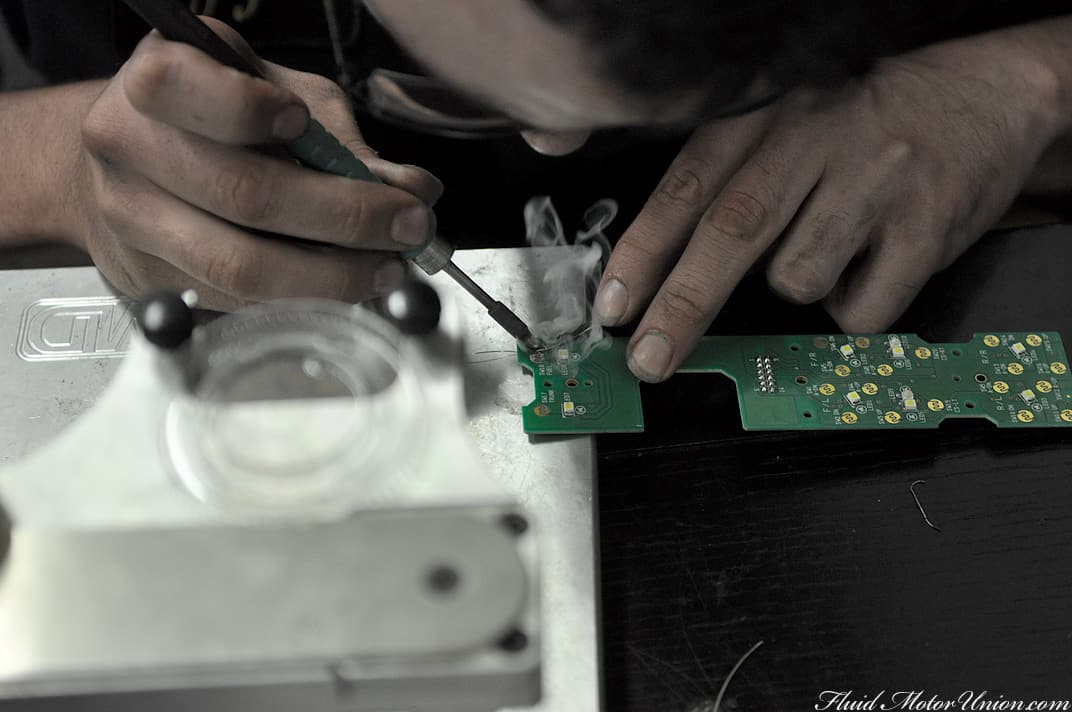
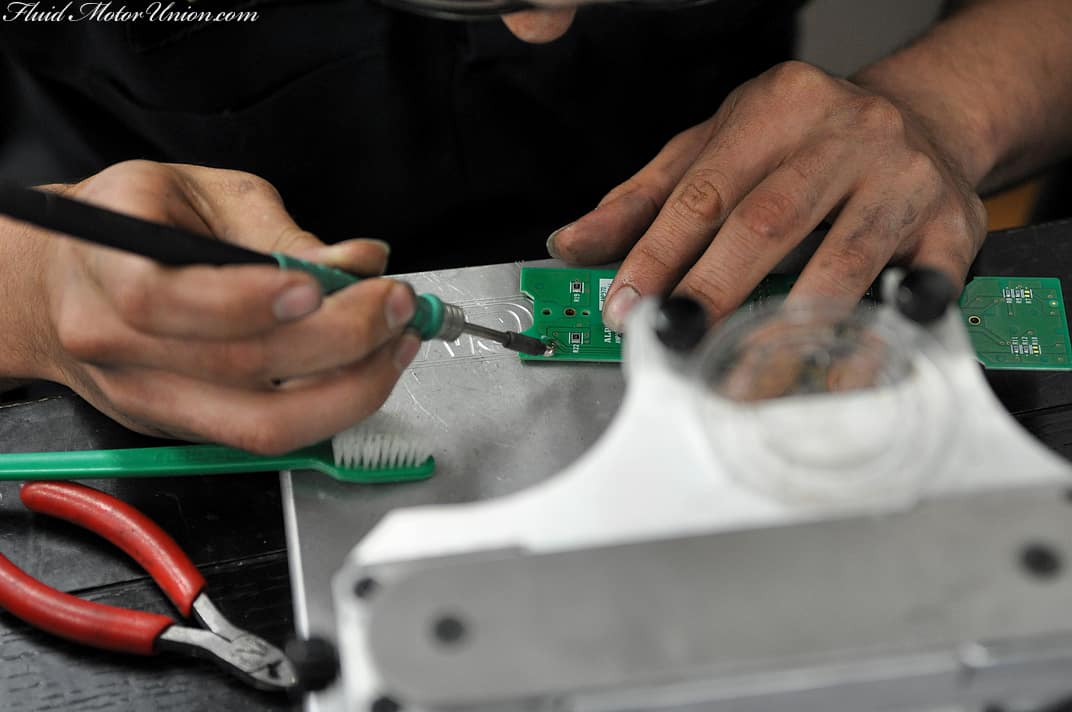
With the gold wire put into place, and with its excess removed, we brought the board back into the garage and pulled out our trusty multimeter to make sure there was the proper level of resistance in the wire. If the resistance is too high, the gold implementation wouldn’t work; the high resistance would cause a larger-than-normal voltage drop along the wire, which may put the switch’s voltage at too low a point to be recognized by the gas door mechanism. Thankfully, everything checked out perfectly! After reinstalling the switch in the car and waiting two minutes for the car to realize that it once again had a switch installed there, everything worked without hesitation. An unorthodox fix for an otherwise rather expensive repair!
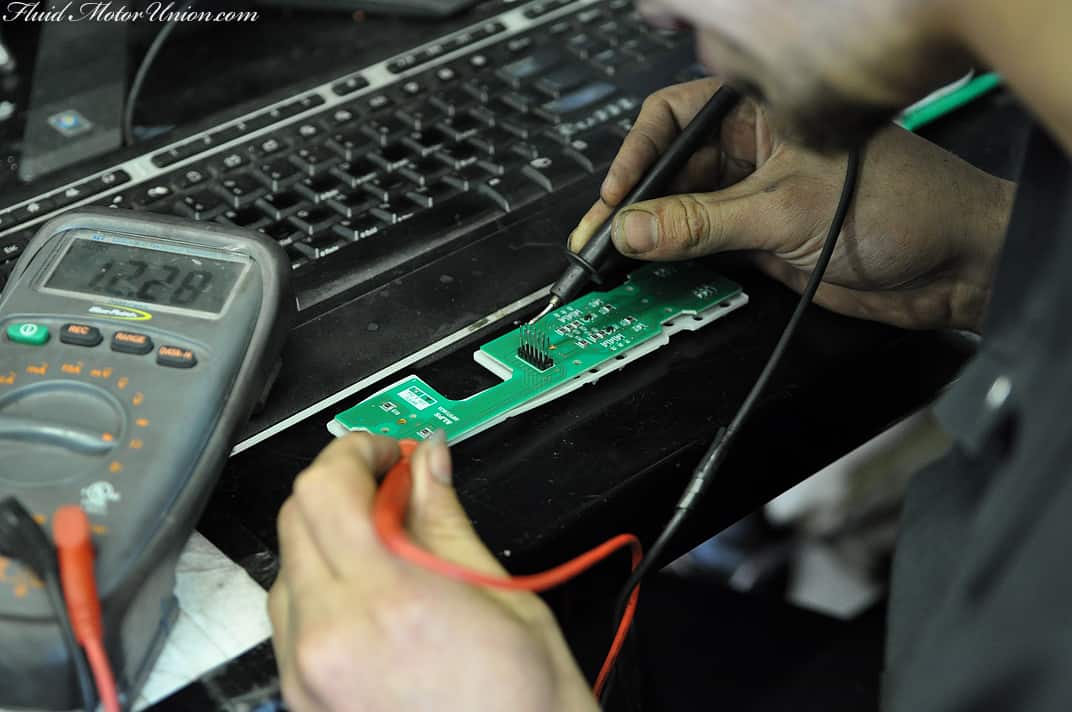
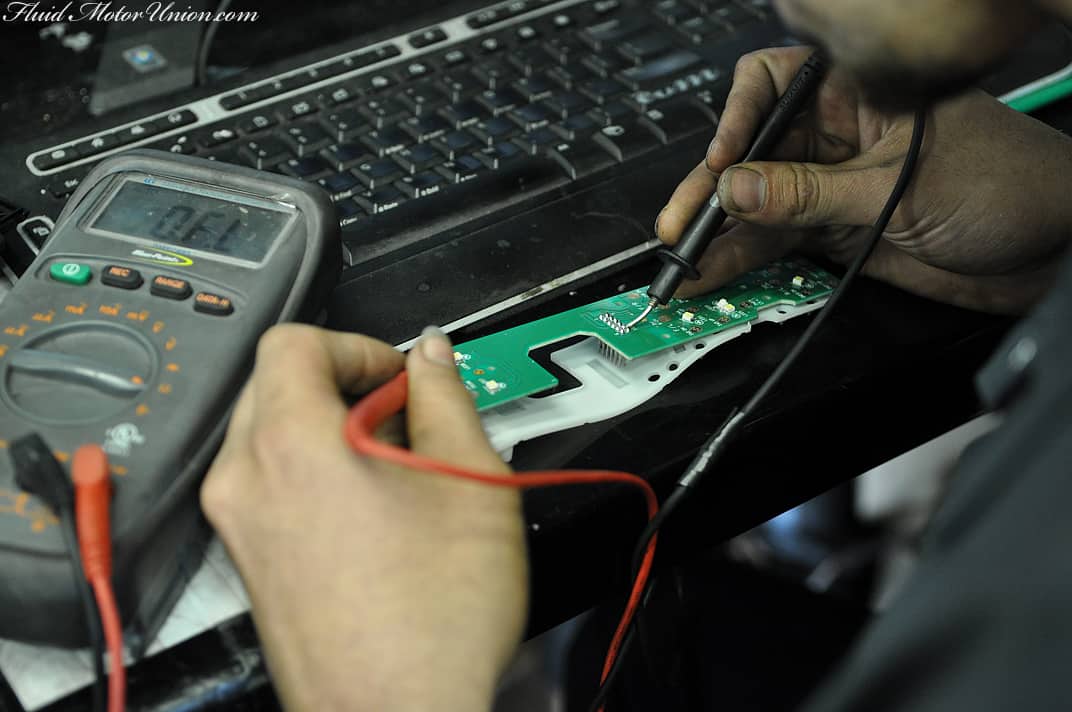
And now, it’s time for the silver portion. Well, okay, it’s not technically silver, but that’s the hue given off by stainless steel, so we’re making it count. As we mentioned earlier this week, we’re currently constructing yet another FMU E39 M5 Rear Section exhaust. With that sort of construction comes our favorite type of picture — welding pictures! Seeing as how we gave you an impromptu physics lesson earlier in the blog post, we’ll just let the pictures speak for themselves here.
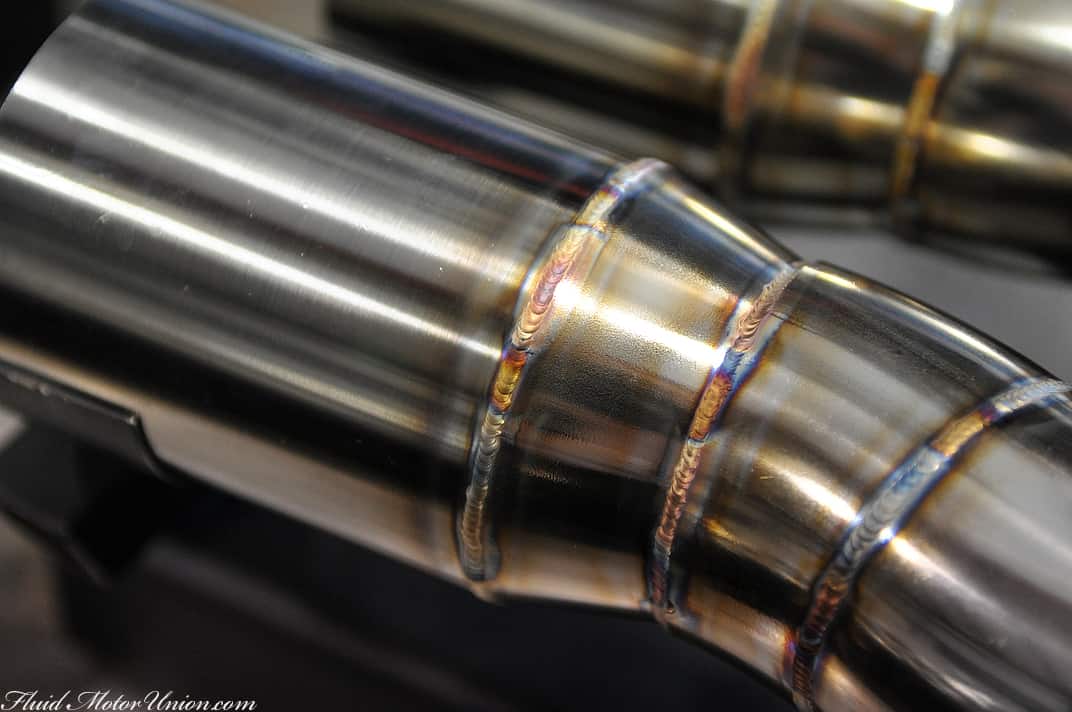
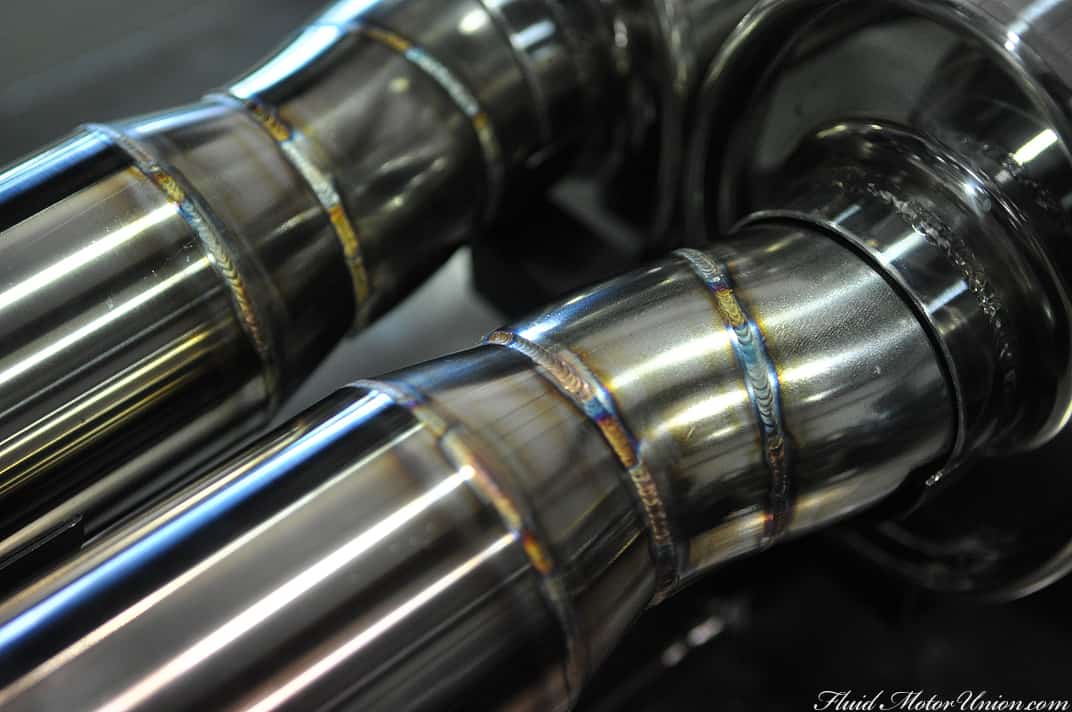
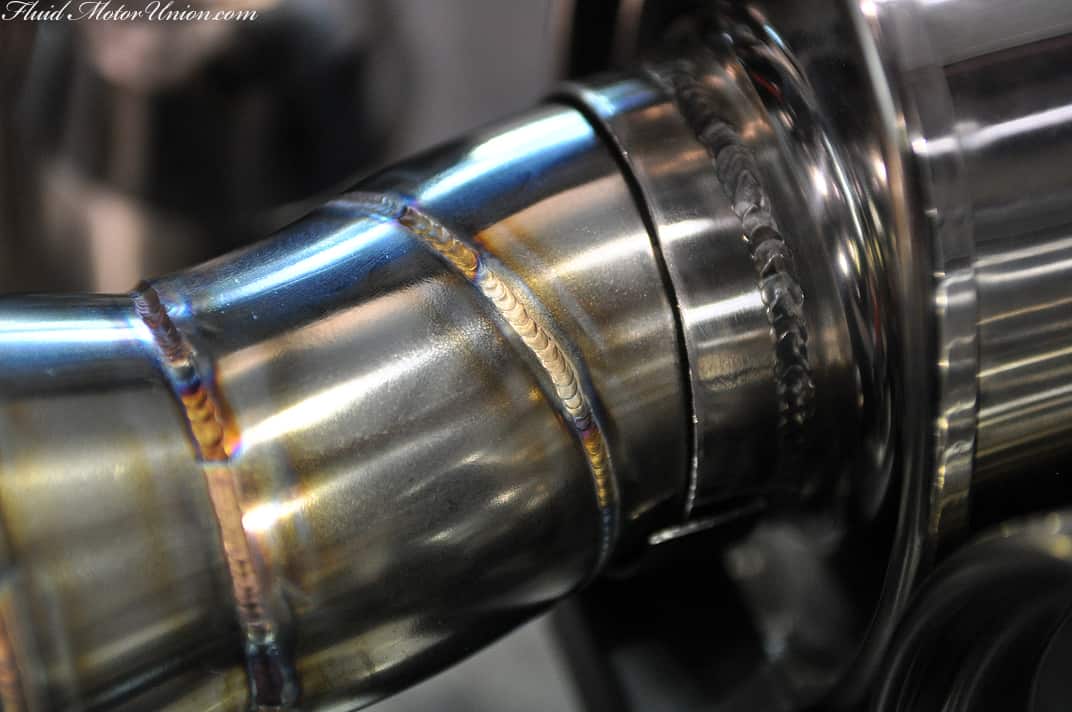
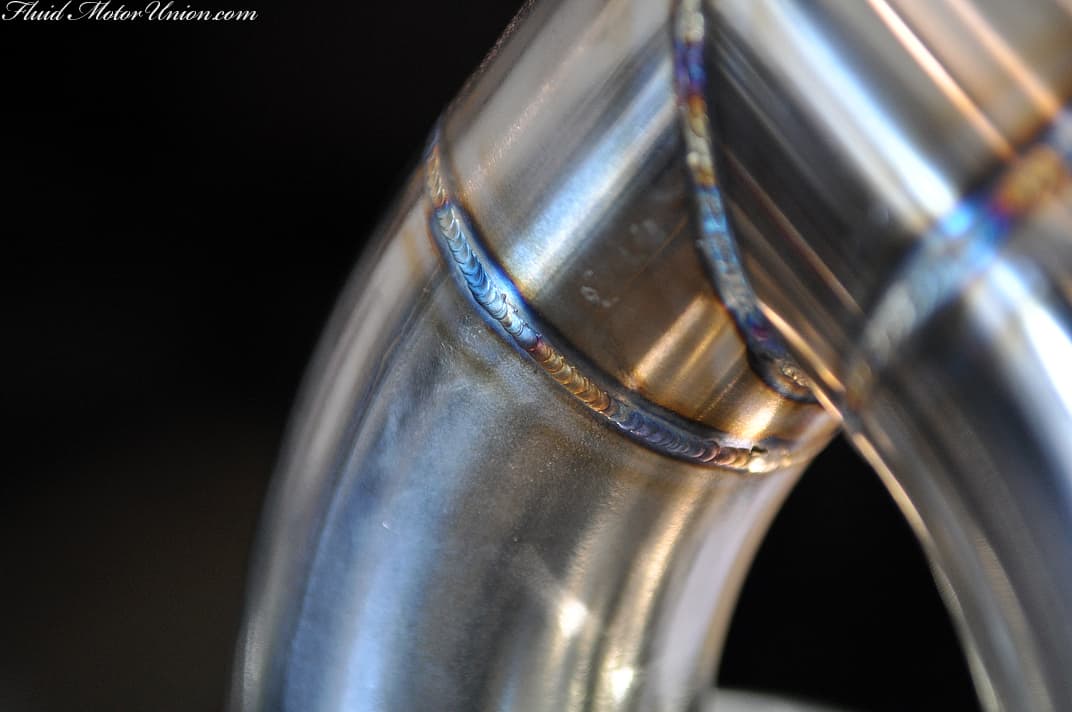

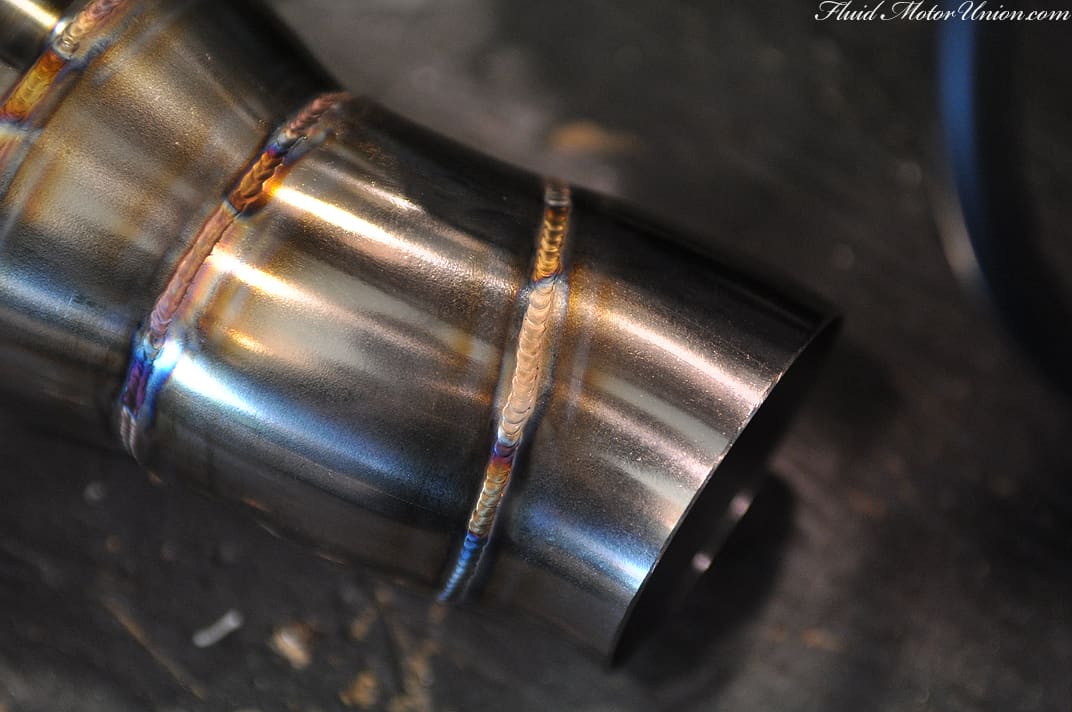
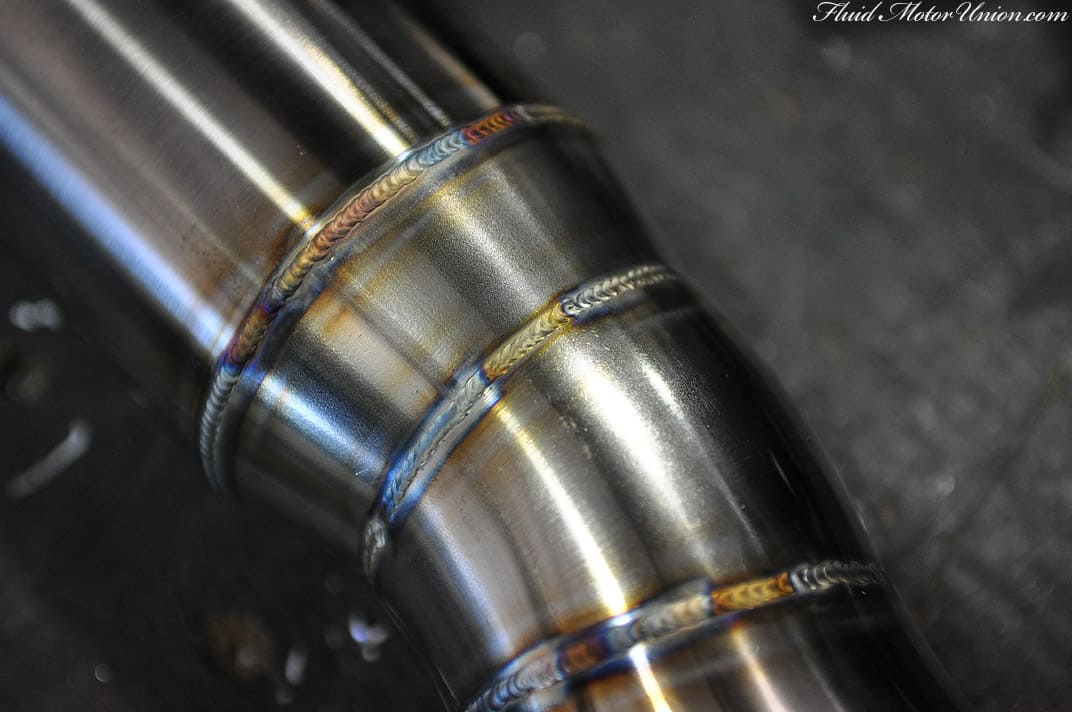
Sometimes no words are the strongest words of all. Not too sure what that has to do with anything, but it sounds like sage advice nonetheless.
We’ll start with gold, naturally. Remember the Bentley Continental GT we showed you last week? Well, if you recall, its gas door button on the interior had stopped functioning. The gas door mechanism itself worked just fine, but somewhere between the switch and the mechanism, the signal gets lost. Well, a quick removal and breakdown of the circuit board that comprises all the door switches (window, gas door, etc.) showed us our issue. Here’s what we found:

Take a look at that small silver circle on the top of the board. See how it looks like part of it is missing? To paraphrase the archetypal mechanic, “Well, there’s yer problem.” At some point in this car’s life, moisture seeped its way into the circuitry on the door’s armrest, and over time it corroded that tiny little sliver of conductive material, which caused the signal to no longer reach the gas door itself. Seeing as how the board would need to be replaced in its entirety, then reprogrammed by Bentley themselves (at a labor rate that resembles the GDP of several small countries), we had a better solution in mind, one that would work just as well. That solution? It comes down to this little, eensy teensy little strip of conductive gold wire, shown here at the end of a screwdriver.

The fix is actually relatively simple in terms of the physics of the whole thing. When that little piece corroded on the board, there was no longer a path for electricity to go from the gas door switch to the gas door itself. Gold conducts electricity, so if we’re able to replicate that path with this gold wire, in theory the electricity can once again travel to the gas door and it will open. This would require two quick soldering points and some incredibly steady hands, as there’s a whole lot more happening on that circuit board, and one ill-timed sneeze could screw it all up. The first step was to thread the gold wire through the small hole in the board next to the necessary soldering points.

From there, we took an incredibly small amount of solder and dabbed it over the necessary point of contact, sealing the gold in place. And then we flipped the board over and did the exact same thing on the other side.



With the gold wire put into place, and with its excess removed, we brought the board back into the garage and pulled out our trusty multimeter to make sure there was the proper level of resistance in the wire. If the resistance is too high, the gold implementation wouldn’t work; the high resistance would cause a larger-than-normal voltage drop along the wire, which may put the switch’s voltage at too low a point to be recognized by the gas door mechanism. Thankfully, everything checked out perfectly! After reinstalling the switch in the car and waiting two minutes for the car to realize that it once again had a switch installed there, everything worked without hesitation. An unorthodox fix for an otherwise rather expensive repair!


And now, it’s time for the silver portion. Well, okay, it’s not technically silver, but that’s the hue given off by stainless steel, so we’re making it count. As we mentioned earlier this week, we’re currently constructing yet another FMU E39 M5 Rear Section exhaust. With that sort of construction comes our favorite type of picture — welding pictures! Seeing as how we gave you an impromptu physics lesson earlier in the blog post, we’ll just let the pictures speak for themselves here.







Sometimes no words are the strongest words of all. Not too sure what that has to do with anything, but it sounds like sage advice nonetheless.




